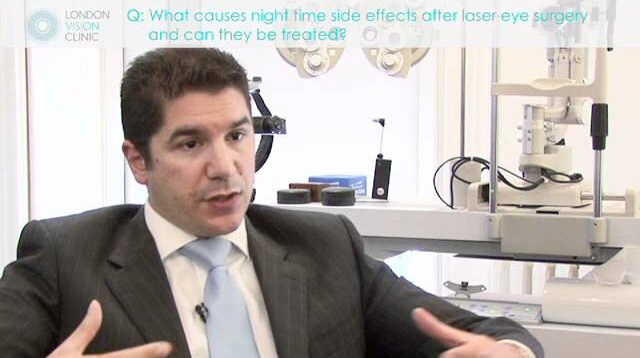Driving at Night After Laser Eye Surgery

Driving at night can be a less-than-fun experience for anyone, but if you’re one of the unfortunate many who rely on glasses or contact lenses, it can be particularly stressful. Forgetting your glasses is, most likely, simply not an option and those who usually wear monovision or multifocal lenses may find that they need to switch to a pair of driving glasses to ensure a safe and comfortable journey.
In some cases, this might even be one of many reasons you decide to go ahead with Laser Eye Surgery. But will getting rid of your glasses or contact lenses immediately improve your night-time drives? Well, maybe not immediately.
You might have heard that night-time side effects after Laser Eye Surgery can affect your ability to drive at night. In this article, we’ll cover everything you need to know about driving at night after Laser Eye Surgery.
Night-Time Effects After Laser Eye Surgery
First and foremost, it is important to reiterate that Laser Eye Surgery is considered one of the lowest-risk surgical procedures available. With its incredible benefits and relative safety, there’s no wonder it has become one of the most commonly performed elective procedures in the world. But that isn’t to say there is no risk of side effects.
In fact, no matter your age, prescription, or individual experience of the procedure itself, you will likely notice some side effects following your treatment – including night-time effects. Thankfully, these are usually mild, short-lived, and most importantly, nothing to worry about.
What Causes Night-Time Effects?
While Laser Eye Surgery might be a particularly quick and non-invasive surgery, it still triggers inflammatory responses in the eye. These natural responses are crucial in the effective healing of the eyes post-surgery. Unfortunately, some of the eyes’ natural healing processes will cause temporary side effects.
Many of these side effects are caused by the swelling of the eye. The body’s inflammatory response to the procedure triggers a rush of fluid to the affected area to help reduce pain sensation and accelerate healing, causing it to swell. This swelling can temporarily impact various aspects of your vision, particularly at night.
Glare, Halos and Starbursts
During the healing process, you may notice glare around bright lights – hence the trouble with driving at night. For some, this glare will come in the form of halos and starbursts. Halos are soft rings which appear around light sources, and starbursts describe the glowing-like effect you see when looking at lights.
How Long Do Night-Time Effects Last?
Many Laser Eye Surgery patients will notice an immediate improvement in their vision following their treatment. This might be in the form of being able to read the numbers on a clock or the Fire Exit signs at the clinic. But, it is important to remember that the full benefits of Laser Eye Surgery won’t be recognised until your eyes have completely healed.
As our expert Laser Eye Surgeon notes in the video below, swelling in the eyes will cause night glare in all patients to some extent.

Most patients will notice an improvement in the night-time effects of Laser Eye Surgery within three months. However, if residual night vision problems persist after this period, testing can be performed to determine the causes and the best course of action to resolve this.
The most important thing to remember if you experience them is that they are usually nothing to worry about – it’s a healthy sign that your eyes and body are responding and recovering from the surgery.
Minimising the Severity of Night-Time Side Effects
While every patient will experience night-time side effects to some extent, it is possible to minimise their severity. The best way to do this is to opt for a clinic with a comprehensive screening process.
Screening is arguably the most important stage of the entire Laser Eye Surgery process. This appointment allows your surgeon to analyse your vision in detail, including determining the likelihood of complications, allowing them to adjust your treatment plan as necessary. But, some things can also be done post-surgery to help you manage night-time glare.
When Will I Be Able to Drive After Laser Eye Surgery?
The good news is that the vast majority of LASIK patients will be able to get back behind the wheel in as little as one day after their treatment! For LASEK/PRK patients, this may take slightly longer. Some patients may find it useful to wear glasses when driving at night to help eliminate the glare from light sources such as headlights.
If you feel the night glare is excessive, it’s possible the surgery did not adjust your eyes enough, or your pupils are dilating beyond the area treated during the procedure. Some people find leaving the overhead light on while driving can help lessen night-time glare effects. Medicated eye drops can also help to stop your eyes from dilating too much.
Your surgeon will discuss these possibilities with you during your 1-day post-operative appointment, where you find out if you can get back to driving. They will also be on hand to discuss any concerns you may have throughout your recovery.
If you’d like to learn more about recovery from Laser Eye Surgery, get in touch with one of our friendly clinic coordinators. Alternatively, Book a Consultation today to see if you could be suitable for treatment.


